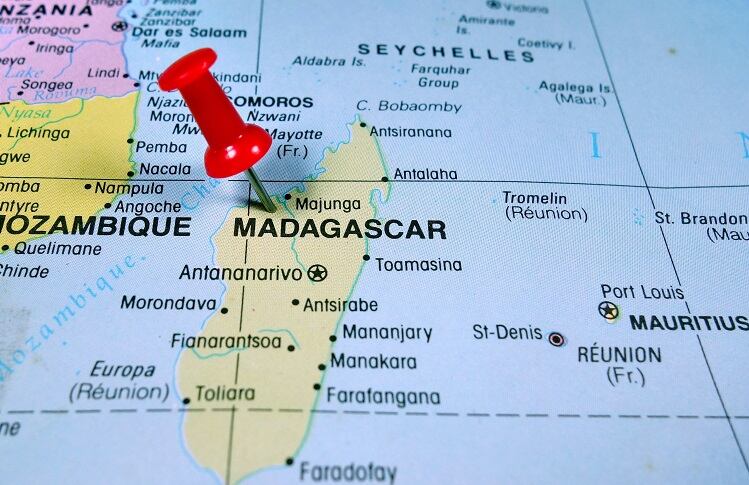“Barring an outright catastrophic occurrence, we do believe that we are at the end of the current cycle,” states a November 2017 vanilla market update from Aust & Hachmann (Canada). “However, how long The End will actually last will depend entirely on how much the major industrial buyers are willing to support the current market.”
As reported previously by FoodNavigator-USA, vanilla bean prices surged in the early 2000s before crashing and then stabilizing for some years.
However, prices have surged again since 2015 as more food manufacturers have switched from vanillin to vanilla bean extract as part of natural and clean label drives - ignoring what Sentrex Ingredients exec Naushad lalani described in a report penned in April 2017 as "a fundamental crop reality... the global availability of vanilla beans was insufficient to flavor everything with natural vanilla. It's akin to squeezing an elephant into a Volkswagen."
This, coupled with cyclones and ongoing challenges in Madagascar (which accounts for 80-85% of the world’s production) has sent prices into the stratosphere.
While vanilla supplier Nielsen Massey says it is “cautiously upbeat” about the size and quality of the 2017 vanilla crop in Madagascar, demand is likely to significantly outstrip supply for years to come.
Country by country
1. Madagascar
The recent Aust & Hachmann report notes that exporters have been playing catch up due to a delay caused by a Madagascar government export ban on all vanilla beans through October 15th. “After some early pressure leading up to the end of the export ban, prices have stabilized, but remain at very high levels, just a notch below the levels created by the post cyclone hysteria in April/May,” states the report.

“Although the quality of the 2017 crop is definitely better than the 2016 crop, one cannot say it is a “vintage” year by any means … [I]solated communities such as Maroantsetera and Mananara south of the Sava area have become very important areas for high quality mature vanilla beans. The level of maturity of the green vanilla is the greatest influencing factor on quality and yield for any vanilla crop. Generally speaking vanillin contents and aroma profiles should be much improved over 2016,” added the report.
Aust & Hachmann has projected a harvest of between 1300 and 1600 mt for all qualities, including quick cured vanilla and vanilla extracted green. However, it remains too early to make predictions for 2018, particularly because of recent climatic factors have caused significant uncertainty around the quantity and quality of the next crop.
“Industrial demand for extraction grade Madagascar vanilla remains strong enough to support the record high prices that show no signs of abating in the near term. Industrial buyers are likely to take more coverage than in 2016 given the better quality,” added the report.
2. Indonesia
The 2017 vanilla crop from Indonesia was around 150mt, and prices for the this crop are “currently and inexplicably higher than Madagascar prices”, states the report.
3. Papua New Guinea
“Papua New Guinea will see a healthy crop harvest in the first months of 2018 and could yield between 200 and 250mt,” states the report. The prices of vanilla from Papua New Guinea have reportedly softened as buyers focus on Madagascar. “The PNG Tahitensis type vanilla has helped to preserve much of the retail and food service market but not at the same levels that Madagascar enjoyed.”
4. Uganda
Production in the African nation has stalled in recent years, with quality also described as “quite poor”. There are green shoots of hope, though, as the Ugandan government is said to be taking a more active role to improve quality and push Ugandan vanilla production above 100 mt in 2018.
5. The Comoros
The vanilla crop in the Comoros, which is a couple of months ahead of Madagascar, was reported to be between 40-50 mt in 2017 (Bourbon vanilla). Aust & Hachmann note that the quality is the same, if not better, than Madagascar.
“The government takes a keen interest in the vanilla trade and there is an aggressive growing campaign with a goal of doubling production by 2020. The potential is here as this region has produced crop sizes of close to 200mt in the past.”
“Proceed with extreme caution”
“Although the vanilla market remains as unpredictable as ever we see little likelihood of a price collapse in the near term. The question of demand is extremely difficult to quantify. There is little doubt that global consumption has dropped, but by how much? 25%? 35%? 50%? Whatever the figure is, it has not been sufficient to reverse current pricing trends,” notes the report.
“2018 will present several challenges for the vanilla market including the climate (cyclone season will start in January in Madagascar), politics, (there are elections in Madagascar) and the on-going efforts to develop alternative natural vanilla flavor substitutes that do not originate from vanilla beans.
“We see only one possible course of action, proceed with extreme caution while minimizing any long-term exposure to the market,” concludes the report.

